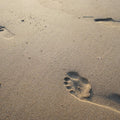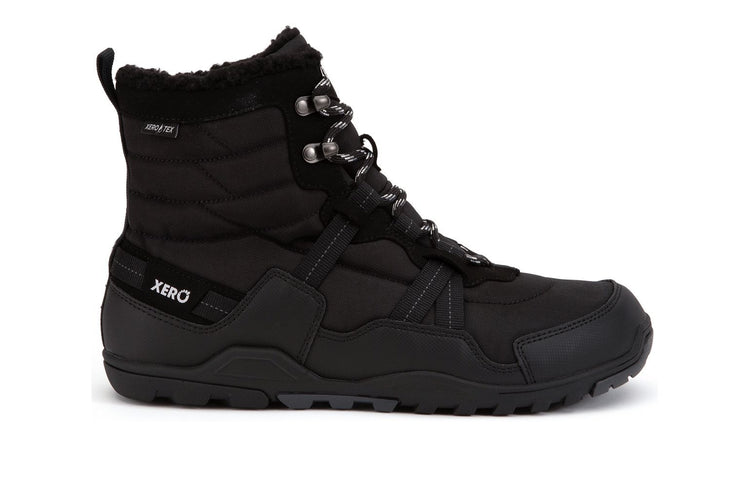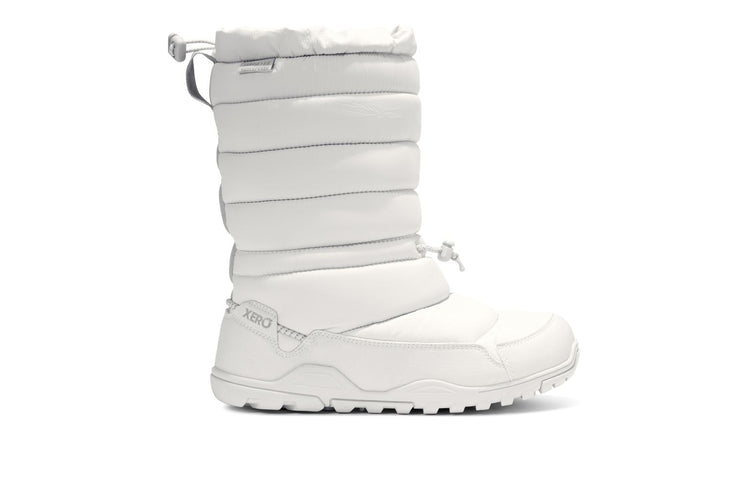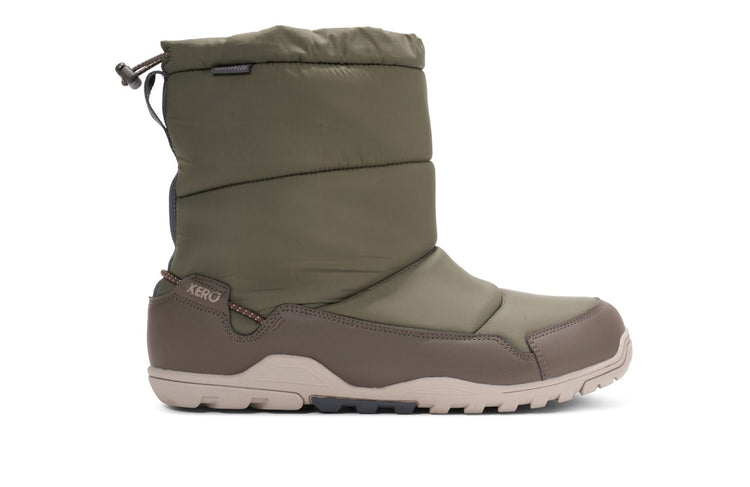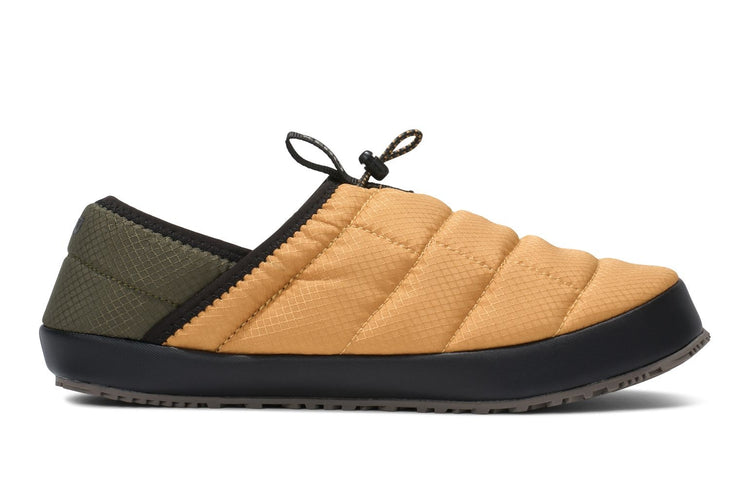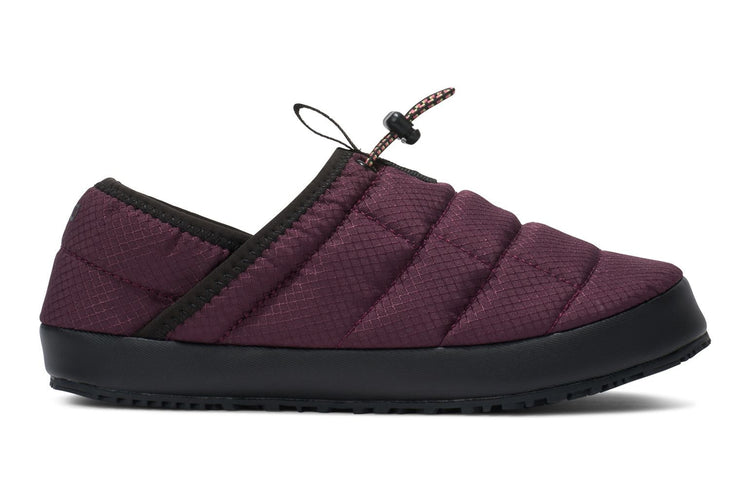latest News
Barefoot in Asia - Regev's Review
I just realized that I have a strange history with barefoot running, barefoot walking, and minimalist shoes.First, like most of us, I spent a lot of time barefoot as a kid in the Summer. I went to a camp in the Pocono Mountains (Camp Shohola just in case any readers also went there) and whenever I had the chance, I was barefoot (made easier by the fact that I spent half of my days doing water sports). I was a competitive diver, too, so that kept me out of shoes.In junior high school and high school, I was a gymnast, so that was even more barefoot time every day.When I was 18, I went to New York City to be a street performer. I had already been doing this in Washington, DC, doing a magic act in Georgetown, and on K Street, near the White House. When I got to NYC, though, I found it much harder to get a crowd and, even worse, within a few weeks, the other street magicians had stolen all my bits! I asked one of the veteran street acts what I should do and he said, "Simple, write an act that nobody would dare steal."I pondered this for a while, until I landed on the answer. I created an act that had a bunch of crazy gymnastics in it (I did a running front flip over someone's head, stealing their hat and placing it on my head while in mid-flip), and a finale where I... wait for it... walked on broken glass in my bare feet.Now let me back up. For the gymnastics part of the act, I wore minimalist shoes. They were some old Adidas (I can't remember the name), with zero-drop, very little toe spring, not much padding. Just enough between me and the ground so I didn't kill my feet. This was in 1980-81, BTW.I loved these shoes. I bought every pair I could find. When I could no longer find them, I asked the local running shoe store what happened and he answered, "Adidas stopped selling them; they were lasting too long."I don't know if his info was accurate but, if it was, it wouldn't be the first time a company pulled a product that didn't wear out or go obsolete fast enough.Luckily, I found a company that sold shoes to prisons (you can find ANYTHING in NYC), and they had the last few pairs of these shoes... I bought them all. And they lasted through some serious abuse.Okay, back to walking barefoot on glass, though. Let's just say that it's part physics, part showmanship, and part some-hard-to-describe-thing that, if I could convince you to jump onto a 3" high pile of shattered beer bottles, you would instantly get a knowing look in your eye and say, "Ahhh... I get it now."In 5 years and thousands of shows, I only got one small cut. But by the end of the day, my feet were FILTHY from being barefoot on the street.CUT TO: Going to Asia in 1989.This is where I got hooked on being barefoot. Aside from the fact that you never wear shoes into almost any building (I was in China, Nepal, India and Thailand), there were plenty of opportunities to be barefoot outside as well. There were also plenty of times where you wanted something on your feet, but not much because it was really hot when I was there, and anything more than a sandal was way too much.When I came back from Asia, I stuck with the habit of removing my shoes whenever I went into someone's home (we've saved a fortune on carpet cleaning by not dragging dirt in from the outside).Okay, so why this long story?Simple, I was reminded of it all when Regev Elya did his review of Xero Shoes, which he took on a 7-month trip through Southeast Asia (I'm SO jealous).Of course, I think that Xero Shoes are the best minimalist shoes for a trip like that... but check out what Regev says.
Bare feet are not just for running
If you thought being barefoot was just about running... HA!And if you worry about things you might step on... HA! HA!
Barefoot Running Sandals vs. Running Shoes
A barefoot running vs. running shoes "infographic" I'm get all geeky over well-presented information, and the graphic about barefoot running and regular running shoes from XRayTechnicianSchoools.net is a pleasure. Whenever someone says to me "Barefoot running can cause injuries" I remind them of the fact in 1/3 of the infographic: 90% (I heard 80%) of marathoners get injured each year. When people ask me about wearing barefoot running shoes in the winter, I remind them of that big squiggly time line showing that for hundreds of thousands of years, we would walk and run barefoot, without shoes, in some pretty cold places (in other words, your body, given time, will acclimate). And, I agree that being barefoot is not appropriate all the time... like when you want to get into a restaurant. Hence the value of our high-tech upgrade on the Tarahumara huarache-inspired shoes and sandals, where you still get a great barefoot feel, but can get into restaurants. I also got a great flashback from the 1974 timeline: I vividly remember getting my first pair of Nike Waffle Trainers. What's funny is that most people remember that it allowed you to land on your heel. I remember that it had such a large amount of "toe spring" (a curve up from the ball of your foot to your toes) that it kept me on my toes! (I was, and still am, a sprinter, so I don't spend much time running on my heels). AMAZING to see that barefoot running shoes are a $1.7 billion industry, in part because the market has grown MUCH faster than anyone imagined it would. But also because most of the barefoot running shoes are SO expensive. Minimalist shoes clearly doesn't mean minimalist prices, it seems ;-) And, of course, I agree about the best way to start barefoot running (there's no rush to make the transition out of running shoes and over to barefoot) Created by: X Ray Technician Schools The content of this post does not constitute and is not intended to be a substitute for professional medical advice, diagnosis or treatment. Always seek the advice of a physician or other qualified health provider with any questions or concerns you may have about your health or a medical condition.
How Barefoot is Barefoot, Really?
Okay, Pop Quiz time: Which of the following fictitious barefoot running shoes gives you more of a barefoot feel: a.) ASICs Nuttin’-2C with a 10mm thick sole b.) Brooks Zilch-City with a 1mm thick sole If you answered B, you’re mistaken. But if you answered A, you’re also wrong. Yes, my apologies, but this was a trick question. In the barefoot/minimalist footwear world, there are several concepts buzzing around, ideas upon which runners make buying decisions, that are potentially red herrings. In other words, these concepts can be used to inform or mislead, depending on how they’re used and how much other information comes along for the ride. And “sole thickness” is a biggie. If you look at ads for various minimalist and barefoot footwear products, sole thickness is highlighted. Sometimes bragged about. Thinner soles, some believe, are inherently better than thicker. Unless you’re a trail runner, then slightly thicker is better. Confused yet? You should be. Because, it’s not that simple. Let’s go back to my trick question.. The reason neither answer is correct is that I didn’t tell you what the soles are made of. If the 10mm sole was made of cotton candy, you may as well be running on the ground. But if the 1mm sole was made stainless steel, or carbon nanotubes, you wouldn’t be able to tell if you were on the ground at all. I’m exaggerating for effect — both comic and practical. But looking out in the market, you’ll see sole thickness used as a seeming shorthand for “barefootedness.” In other words, “thinner” means closer to barefoot. I recently had an Xero Shoes customer call me and tell me about his particular brand of minimalist shoe and how it advertised a 3mm sole. He wanted to know whether I thought his shoe was “more barefoot” than our 4mm Connect barefoot sandal. “Great,” I said, knowing the shoe in question. “It’s only 3mm thick. But is it flexible? Can you roll it into a tube?” “Well, no,” he said, clearly trying. “It’s pretty rigid.” “And if you put on that shoe and you stepped on a nail, how similar would that feel to stepping on it barefoot? Wait!” I added, hoping I wasn't too late to avoid a lawsuit, “Don't actually step on a nail to check!” I continued, “If you look inside that shoe, can you see the extra 2-3mm of insole padding they added to the 3mm outer sole?” “Uh-huh.” I could hear in his voice the first stages of someone starting to see through the fog of marketing hype. Many shoe marketers suggest, and many minimalist shoe buyers believe, that sole thickness is equivalent to “barefoot feel.” It’s not. It’s more complicated than that. When it comes to minimalist shoes, I feel compelled to paraphrase a line than no man wants to hear from a woman, “Honey, thickness isn’t everything.”
The little lie of barefoot running
As the barefoot running boom continues to explode, it’s important that we debunk the mythology that’s sprung up and face some facts. And perhaps the most obvious fact is this: If you run with anything between your skin and the ground, you are not barefoot runner. Let me say that again. If you wear Vibram Fivefingers, New Balance Minimus, Merrell Trail Gloves, Altra Adams, Vivobarefoot shoes, Newtons, Inov8 shoes, even our Invisible Shoes huaraches running sandals, you are not a barefoot runner. I don’t care if your previous shoes were padded stilts and your new shoes are a “zero-drop” natural movement minimalist shoe, if you’ve got something on your feet you’re not barefoot running. Barefoot running means that you run in bare feet. Period. Now, don’t get me wrong, I’m not saying that if you’ve just spent $125 on your Vibram Bikilas you need to throw them away, or that if there’s a barefoot running Meetup you can’t be part of the cool clique. And I’m not saying everyone needs to be barefoot. And, clearly, I'm not saying "don't buy Xero Shoes" ;-) But it’s important that we differentiate actual barefoot running from minimalist running. Why? Because more often than some would like to admit, barefoot running and minimalist running do not produce the same results. The promise of barefoot running is that the sensations you get when your skin contacts the ground — often known as pain — teach you proper running form. That is, if you change your form to make the pain go away, you’ll have a more efficient, lighter, easier stride, and you’ll be able to run pain-free for life. Anything that you put on your feet reduces the amount of sensation you feel and can interfere with the feedback loop that barefoot running gives which produces those benefits. Again, I’m not saying that you don’t get feedback from minimalist shoes. You certainly get more than you do when you’ve got 2″ of padding in your Nike I Can’t Feel The Grounds. As the developer of Xero Shoes, I know hundreds of people who switched to our sandals, improved their barefoot running form, eliminated life-long aches and pains, and now enjoy running ultra-marathons. As one of our early customers put it, "Xero Shoes are just like being barefoot... if they covered the world in a thin layer of comfortable rubber." But, I’ve also met a LOT people who bought a pair of Vibrams or Merrells (or any other minimalist shoe), soon became injured, and now tell everyone they know that “barefoot running” is dangerous… and they’ve never run barefoot! I’ve been on a number of barefoot running panel discussions and, inevitably, there will be some number of doctors, physical therapists, podiatrists and other medical professionals who say, smugly, “Hey, stick with this barefoot running thing. All the people getting hurt by doing it are putting my kids through college!” Before they can finish chuckling, I fire back: Me: “You know, of course, that all you guys made the exact same joke 40 years ago when running shoes were invented, right? And you know that people who have no problems running barefoot — and ones who get cured of injuries by running barefoot — will not come to see you, right?” Them: “Uh…” Then I pull out the bigger guns: “And when a patient tells you they got hurt from barefoot running, did you ask if they were actually in bare feet? Did you check to see if they simply over-trained by doing too much, too soon? And, maybe most importantly, did you take a video of them running so you could analyze their form and see if they were simply using the same injury-producing mechanics they used when they wore shoes? Or did you see if they were trying to stay on their toes, putting extra strain on their calves and Achilles, because they have a mistaken ideas about proper barefoot form?” Them: “Uh…” Barefoot running is more than switching to a minimalist shoe. And it’s more than simply removing your shoes. Don’t believe me? Go to a barefoot running event, find the people in their minimalist shoes, and see which ones are still landing on their heels, as if they’re still in motion controlled running shoes. In fact, be on the lookout for runners who are actually barefoot doing the same thing! Some of us are either unable to feel those important form-changing sensations, or unable (without coaching) to actually make form changes in order to find a painless way of moving. For an example of this, check out Pete Larson's video of the recent NYC Barefoot Run. Most of the VFF wearers, and a handful of barefoot runners are still landing on their heels. (I was there and noticed the same thing, but I didn't have the brains to video tape it... so, Thanks, Pete!) Let’s wrap this up with a wish: If you’re one of those “barefoot” runners who has never run barefoot, I can’t encourage you enough to try it. Don’t think there’s some transition you need to go through before you’re “ready.” Ironically, the best advice I can give you is: Just Do It! Get on a good clean hard surface (a bike path is great, streets work too) and go for a run. Listen to your feet, if they hurt, try to move in some different way so that they don’t. And if you can’t figure out how, then stop and try again another day. Don’t think you need to build up callouses; none of us who successfully run barefoot have any (they’re another sign that you’re doing something wrong). If you can find a coach or some training, get some guidance. Report back here with what you discover. The goal is not to be barefoot all the time. The goal is to be flexible. To be able to run comfortably, easily, and enjoyably under any circumstance. To know when barefoot is the best option and when something under your feet is called for. I wear my Xero Shoes for all my walking, hiking, and getting into restaurants. I'm barefoot for a lot of my sprinting training. But, hey, I still wear running shoes, too… when I have to shovel a 2′ Colorado snowfall. The content of this post does not constitute and is not intended to be a substitute for professional medical advice, diagnosis or treatment. Always seek the advice of a physician or other qualified health provider with any questions or concerns you may have about your health or a medical condition.
5 Common Stride Missteps
Let us guess, you ditched the cushioned clodhoppers only to find a new host of issues to deal with. Blisters on the bottom of your feet? Sore hips? Calves aching so much you can’t walk? Soak in some Epsom Salt and give yourself a break. No one said changing a lifetime of running habits overnight would be easy. No matter what shoe (or lack thereof) you wear, if you don’t change your stride, it won’t matter. Not sure if you’re “doing it right?” Below are five common missteps to set your stride straight.Misstep #1 Incorrect Stride RateWhen it comes to running, we get into a groove and find a familiar, comfortable place. We expect things to feel a certain way. Traditionally, runners trod along at roughly 120 steps per minute. With a forefoot or mid-foot stride, you need to speed up your stride rate and shorten your steps to roughly 180 steps per minute.Initially, it will feel very strange and awkward, and you may need to do some game time internal persuasion to stay consistent. Stick with it and you will be surprised how quickly you become accustomed to your new stride (and the pain-free knees that accompany). Remember, forefoot/mid-foot striding in minimalist shoes requires stronger calves, Achilles, tendons, ligaments and bones - you will slow down initially, but as you strengthen so does your speed. Take your time and slowly work your mileage up.Misstep # 2 Over-stridingOver-striding jars the body and puts unnecessary strain on your ankles, knees and back. Watch your feet closely as you run. Do your feet land under your center of mass where they should or in front of your body? The closer they are to you, the better. It is also common for runners to kick their legs out in front, then land lightly on the forefoot, rather than keeping a normal stride.Think of it as a modest can can dance in running form. Why add the extra stride and expend extra energy without the payoff? Keep your stride short and land under your center of mass.Misstep #3 Pushing/Pulling Your StrideAre you taking off for a run only to find a nasty blister swelling on the ball of your foot afterwards? When you push off for your stride, or pull your foot back towards your body to complete your stride, you’re smearing your foot across the ground. All of that extra friction is sure to create an uncomfortable blister or two. Keep your stride light and eliminate the foot smear and you will avoid blisters.Misstep #4 Incorrect Placing and Lifting of the FeetAre you jamming your foot to the ground and using a heavy stride? Going lighter and minimalist not only includes your shoe but your stride as well. When you run, imagine you are sneaking up on an elk in the woods or running on hot coals. Place your forefoot or mid-foot on the ground, then quickly lift it back up. The faster you move, the better. Doing this will keep your stride light, fast, and put less strain on your body.Misstep #5 AsymmetryHave you experienced a blister or soreness on one foot, but not the other? Pain in only one shoulder? Stronger strain in the right Achilles but not the left? Your symmetry is off. This is easy to do but also easy to fix. If you consciously try to have your feet, legs and arms move symmetrically in the same way, you will find most of your problems cease immediately. This becomes more crucial at the end of the run when you are fatigued and your stride isn’t as precise, your arms aren’t as stiff. Strive to keep yourself strong and symmetrical to the last step.Of course, there is the granddaddy of all missteps – the heel strike. We hope that no one is shedding their shoes only to pound their heels into the pavement (ouch!) Be sure to take on a forefoot or mid-foot stride and let your heel gently touch the ground as you roll through your step.Have you done any of these? We know we have! If you’ve overcome any stride challenges, do share. Your experiences may help someone else out there.Feel the World!The content of this post does not constitute and is not intended to be a substitute for professional medical advice, diagnosis or treatment. Always seek the advice of a physician or other qualified health provider with any questions or concerns you may have about your health or a medical condition.
find YOUR run
Do you know how many runners there are in the US? Take a guess. No…a little higher.There are approximately 49.4 million runners. That is roughly 1 out of 6 people. Runners of all kinds: casual runners, committed runners, weekend warriors, sprinters, 5k runners, marathoners, ultra runners and everything in between.If you haven’t noticed, as time goes on, races just become longer and longer and longer. Remember when the marathon used to be the ultimate distance running benchmark? Now you can run a 50 miler, the Leadville Trail 100 or the Badwater 135 mile race. Not enough? Try the self-proclaimed (and we agree) coldest and toughest race in the world – the Yukon Arctic Ultra. You can do up to 430 miles through snow and -50 degree temperatures. Still not enough? Line up for the Self-Transcendence 3100 mile race in Queens next June.We’re not saying these races are new, some of them have been around since the 1920’s, but they are newly popular. Ultrarunning is now glamorized and thanks to the famous Tarahumara in Born to Run and Marshall Ulrich’s feats in Running on Empty, the popularity will only increase.But what if you don’t want to run that far?Then don’t.Face the facts: you’re not Scott Jurek. You never will be. And that is OK. Really, it is. Scott didn’t get to where he was without a lot of hard work, training, and a LOT of running.Running 5 miles at a time isn’t for everyone – let alone 26.2. If you don’t enjoy it or don't have the available time to dedicate, then don’t do it! Our CEO Steven Sashen certainly doesn’t. He runs his distances in the shortest increments possible – as a Master’s All American sprinter for the 100 meter dash (and only a 60m dash during the indoor track season).There are 8,023 5K USATF Active Certified Road Courses and only 847 marathons, with a measly 93 ultras tacked on for good measure.For those of us that have run longer distances, if you do feel up to the challenge, seize the opportunity and register. Crossing the line after a marathon is a feeling that cannot be duplicated. But getting there requires a lot of training, patience and sacrifice. If you don’t have the interest or time, it’s not for you. In fact, if walking is all you want to do, go for it. Recent research from Kirk Erickson at the University of Pittsburgh shows that walking 6-9 miles per week keeps your brain from shrinking as you age.Whether it’s the local Turkey Trot or the Boston Marathon, the goal is to have FUN and be healthy. Do a distance that feels good and allows you to enjoy yourself. Be proud of getting yourself out the door and keeping the blood pumping. If you can, leave the Garmin at home. Use your run as an opportunity to pay attention to your body, absorb your surroundings and release stress. Lose yourself in the rhythm and cherish those moments while you are in them. Run for no other reason than the sheer pure joy of running.On that note…what is YOUR favorite distance or race to run?
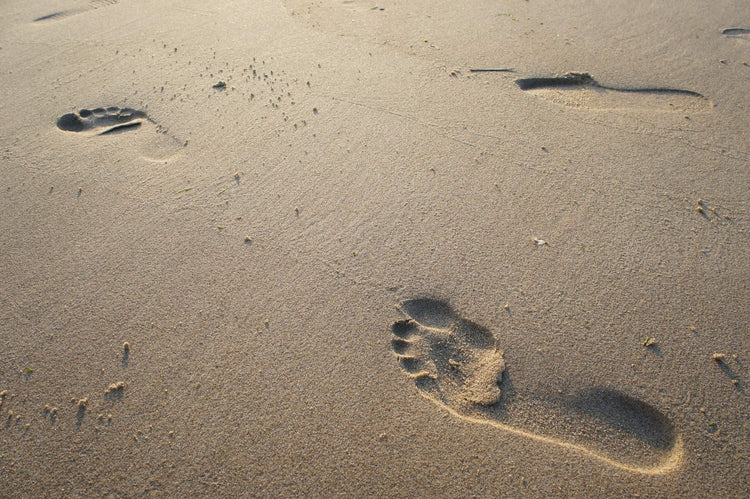
How to Avoid Barefoot Running Blister - Xero Shoes
This post was recently updated September 28, 2023. Getting a blister from barefoot running was the best thing that could have ever happened to me. It not only taught me about blister prevention but, literally, changed my life (and my wife’s too).. Let me back up and tell you the whole story so you can understand why. On my first barefoot run ever, I was so fascinated by the sensations, and so transfixed by experimenting with my gait to see the effects of different stride patterns, I didn’t even notice I had run 5k. Now that may not sound like much to you ultramarathon guys, but I’m a sprinter. I’d never run more than a mile before! About 20 minutes after the run, though, I noticed that I had a big blister on the ball of my left foot, behind my 2nd toe. It wasn’t lost on me that I only had a blister on one foot. And it was particularly interesting that it was my left foot, because most of the injuries I’d been getting (the ones that inspired me to try barefoot running, with the hope it would cure me), were in my left leg. Clearly, I was doing something with my left leg that caused the blister. Something I wasn’t doing with my right leg, which felt fine. A week later, I went out for a second barefoot run, well before the blister had fully healed. In fact, the blister had popped and I had a gaping hole on the bottom of my foot. I thought that I’d experiment some more and see if I could run in a way that didn’t hurt, figuring that if I wasn’t in pain I wouldn’t be doing what caused the blister in the first place. I figured I’d give myself 10 minutes and if I couldn’t find a way to run pain-free, I’d just stop and try again when the blister was healed. As I ran, I kept thinking, “How can I stop doing with my left leg what I’m already not doing with my right?” Instead of paying attention to the “bad” side, I put my attention on my “good” leg, my right leg, and wondered, “How can I just do THIS, whatever that is, with my left leg? But no luck. For the first nine minutes of that run I was in pain. I couldn’t find a way to run that didn’t hurt. About 30 seconds later, something changed. At the time, I didn’t know what it was, all I knew was that I was able to run without my left foot hurting. I wasn’t doing whatever it was that caused the blister in the first place. And, simultaneously, my running was easier, faster, lighter and used less effort than ever. I finished the run (only about 3k this time, but still…) and felt fine. That was over 14 years ago and the last time I’ve had a running injury. What changed? Before I answer that question, let me explain why blisters form in the first place. Understanding that will help the rest of what I say make more sense. And it will also help you see how you could prevent foot blisters in your own running. What Causes Blisters from Running, Anyway? It’s simple. Running blisters are caused by excessive friction. They occur when your skin is being rubbed in a way that damages it. Your body’s response is to gather clear fluid underneath the skin that is being damaged to protect the underlying tissues. As you know, they are painful — especially if the blister pops, exposing the raw skin underneath. When you are running in shoes, blisters can form any time your foot is sliding against your shoe. Obviously, a blister doesn’t form immediately. But when friction occurs from repeated rubbing of any part of your feet or toes inside your shoes, eventually you’re going to wind up with a painful blister. As my story highlights, this can happen when running barefoot, too. The way your foot makes contact with the ground can also generate the excessive horizontal force, the friction, that leads to blisters. Barefoot running blisters certainly aren’t necessary; nor are blisters when wearing running shoes. The key is to prevent the friction that causes them to form in the first place. So how do we do that? The Running Mistakes That Lead to Blisters When runners get blisters, it is often because they are doing one or more of these three things: Overstriding (landing with their foot too far in front of their body – effectively putting on the brakes – rather than placing it under — or closer to — their center of mass) Pulling their feet towards them (which, by the way, also puts strain on the hamstring) Pushing off with their toes (sometimes called “toeing off,” instead of initiating lifting your foot off the ground by flexing the hip, the motion you do when raising your knee)) If you think about the mechanics of how blisters form, you can see the problem here with all three. Each of them creates excessive horizontal force, excessive friction. When it came to my own blister, I discovered I was doing the first of these, with one extra mistake. More about that in a moment. Let’s dive into each running form mistake to help you avoid blisters in the future. Mistake #1: Reaching out with your feet: When you land with your foot too far in front of your body, you’re applying braking force on your feet every time they hit the ground. In other words, as your foot hits the ground, the momentum of your body wants to continue forward but your foot is pushing back against it. Exactly what happens next depends upon what you’re wearing. If you have nothing on your feet, your skin is likely to grip the ground, preventing it from sliding. This means stress on your tissues as lower layers essentially tug against the upper layer of your skin. If, on the other hand, you overstride while wearing a running shoe, your foot is probably going to slide within the shoe as the shoe’s sole grips the ground securely. Whichever happens, this repetitive rubbing can generate blisters. The location will vary, however, depending upon your foot strike pattern. If you land heel first, you’re likely going to get blisters on your heels. (By the way, landing on your heels is a bad idea for other reasons, too. It creates significant impact forces that are hard on your joints and tissues.) If you land mid-foot or toward the front of your foot, you’re going to see blisters on the balls of your feet. This is what I was doing since, as a sprinter, I wanted to land on the ball of my foot. I was overstriding and pointing my foot. How to prevent this issue: The solution to this blister-causing stride pattern is landing your steps closer to under your body as you run. Mistake #2: Pulling your feet Many runners can fall into this habit because it feels like a way to gain more speed – to essentially pull your body forward with your foot against the ground. The result is just like what happens when you land with your feet too far out in front of you, only this time the direction of the rubbing is the opposite. You still end up with increased friction on the bottom of your foot and the resulting blisters. How to prevent this issue: If you stop overstriding, and land with your foot under your body, you’re less likely to pull your foot when it’s on the ground, reducing the chances of developing this type of blister. Mistake #3: Pushing off This is similar to pulling with the foot, though here it isn’t pulling with a foot out in front of me but trying to give an extra push forward with a foot beneath or behind me, by flexing your toes, or what some call “toe-ing off.” You can probably see how this puts horizontal pressure on the toes, creating more friction. The correct motion simply involves lifting (not pushing) your foot off the ground by flexing your hip. In other words, imagine that you step on a bee… you wouldn’t push off the ground since that would drive the stinger further into your foot. Instead, you would reflexively flex your hip, which lifts your foot off the ground. How to prevent this issue: To prevent a pushing-off blister while running, you want to think about lifting the foot rather than pushing off. I could summarize all three of these things by saying you should try to run in such a way that minimizes horizontal forces applied to the bottoms of your feet. Your feet should come and go down with as little braking, pushing, pulling, or sliding as possible If you want to prevent blisters, in shoes or not, it can help if you learn how to run barefoot in a way that minimizes friction. Other Tips to Prevent Blisters Your shoes and your form are probably the most important things to pay attention to if you want to prevent blisters. There are two other things that can be helpful to keep in mind, however: Moisture: Moisture is your enemy when it comes to blisters. As surprising as it might sound, moisture increases friction and can also make your skin more susceptible to damage. If you need to, you can use talcum powder (like baby powder) to help absorb moisture. Running Socks: Socks are a useful way to control moisture when you run wearing shoes. We could get into a big discussion about which are the right socks (Cotton socks? Wool? Double-layer socks?), but I’ll save that for another time. Running socks are usually specially designed to wick away moisture. If you do choose to wear socks to help keep your feet dry and reduce friction, look for the thinnest socks you can find to preserve as much as possible the natural feedback we’ve talked about above. Moderation: While it’s possible to run long distances, in shoes or bare feet, without getting blisters, sometimes our form breaks down when we’re tired. Or the terrain makes it hard to have good form for your whole run. Even in the best of circumstances, your skin can only take so much, especially when you are getting started or beginning to push to longer distances. Runners sometimes resort to extra tricks like applying duct tape or an anti-chafing balm when they know they’ll be dealing with tiredness and their form breaking down at the end of a longer-than-usual run. I get it; sometimes you feel like you need to be out there, even despite your blisters. In general, though, I think it’s best to take it slowly and, again, listen to your body. To summarize, run in a way that minimizes friction on your feet, stay away from ill-fitting shoes that don’t let your feet move naturally, keep your feet dry, and be prepared to listen when your body is telling you to stop or slow down. If you do get them, treat blisters and take some time off so your body can heal. Can Barefoot Running Help Prevent Blisters? I began by telling my own story about getting a blister when I started experimenting with barefoot running. While I’m not suggesting you run barefoot, it was certainly life-changing for me. One of the best things about barefoot running is that bad form hurts, and good form feels great. So you learn right away to listen to the feedback your body is giving you and to make adjustments. All of the padding and support in traditional running shoes actually prevent you from really feeling what’s going on. With barefoot running, you become attuned to the effects of your form and can use that input to coach yourself to become a better runner. It’s an ongoing process of continual improvement. I believe a better form is going to be better for your body in every way, including reducing the chances of getting blisters. But What About Barefoot Shoes? Given what I’ve said about running barefoot, you might be wondering what I’d say about barefoot shoes. Do they give any advantages when it comes to blister prevention? One of the reasons for blisters is the foot rubbing that comes from the way you’re running, as we discussed above. Another reason many runners get blisters, however, is because of the shoes they are wearing. If your shoes don’t fit properly or move properly with your foot, you are going to have issues. Think about it. The bones, joints, and muscles in your feet are designed to move as you walk or run. They are not solid, immovable objects. That means your shoes need to be able to move with your feet to reduce or eliminate friction. Traditional running shoes fall short in this area. They are too stiff to flex naturally and usually too cramped in the toe box to allow your toes to move freely. Instead, they end up rubbing against the sides of the shoe, or against each other, both of which can be blister-causing. A still heel can also lead to blisters on the Achilles. After my barefoot blister experience, I wanted to keep getting that feedback, and enjoying that natural motion. Plus having no extra weight on my feet felt great, too. But I also wanted to get into restaurants without arguing about whether it’s legal to be there without shoes (it is, by the way… but they can have a policy about footwear). Plus, my wife got tired of me bringing my dirty, bare feet into our white carpeted house. Put all that together, and that led to my wife and I starting Xero Shoes, making footwear that gives that barefoot feeling, plus some protection. (Now you know how my blister changed my wife’s life, too ;-) ) How Barefoot Running Shoes Can Help Prevent Blisters Barefoot running shoes are designed with a thin, flexible sole and a roomy, foot-shaped toe box. This kind of shoe is going to do three things for you. First, it is going to allow you to maintain that ground feel I was talking about earlier. You’ll be able to listen to the feedback your body gives you to hone in on your ideal form. Second, barefoot shoes will move with your feet, helping to prevent blisters. And third, the wider toe box can keep your toes from rubbing against each other. People sometimes think it is inevitable that new running shoes will hurt your feet. This just isn’t true. New shoes that actually move with your feet and have enough room for your toes can feel great from day one. Closing Out: Barefoot Running and Blister Prevention It’s no fun to get foot blisters. But my first barefoot running blister was the best thing that ever happened to me as a runner. It taught me to listen to my body and I’ve become a much better runner for it. In fact, not only did my injuries go away, but I became a Masters All-American sprinter. For men in my age group, I’m one of the fastest in the country. I can’t promise you’ll become a nationally ranked runner, but I hope this info helps you have more fun doing whatever you do on your feet and Live Life Feet First! The content of this post does not constitute and is not intended to be a substitute for professional medical advice, diagnosis or treatment. Always seek the advice of a physician or other qualified health provider with any questions or concerns you may have about your health or a medical condition.

